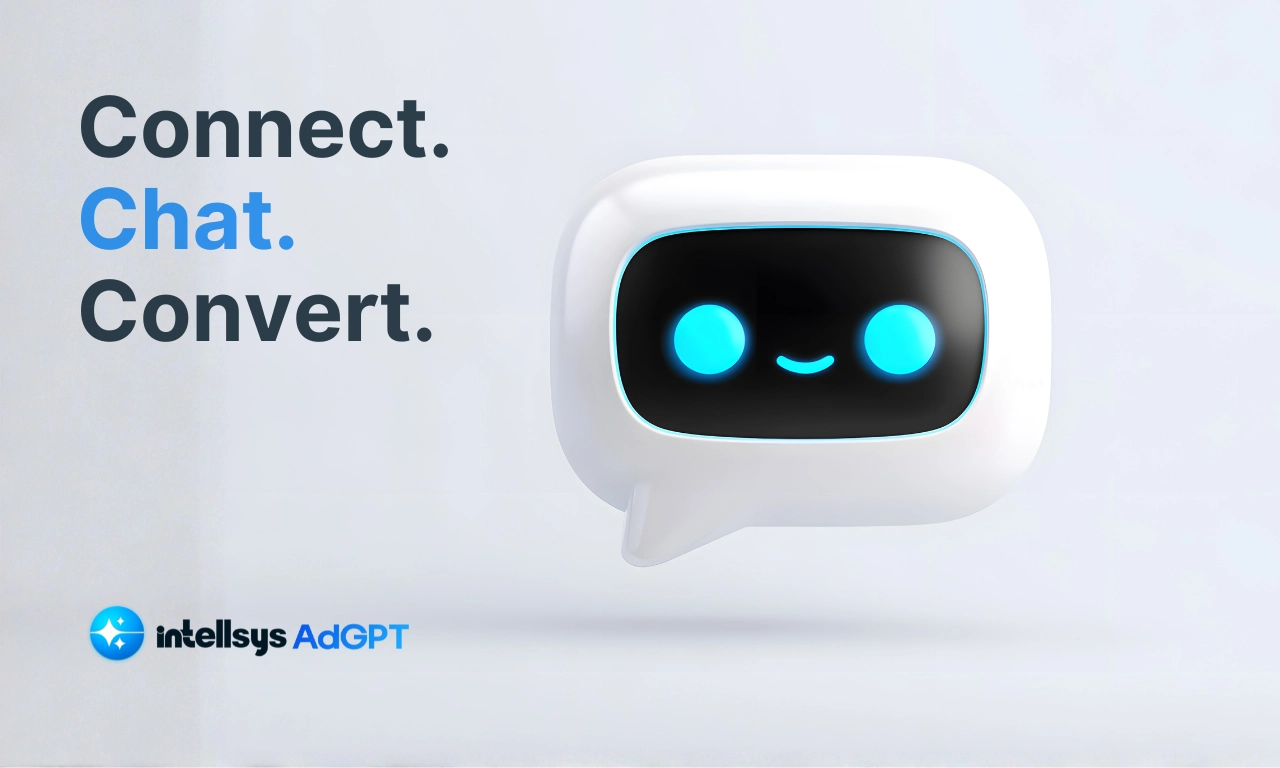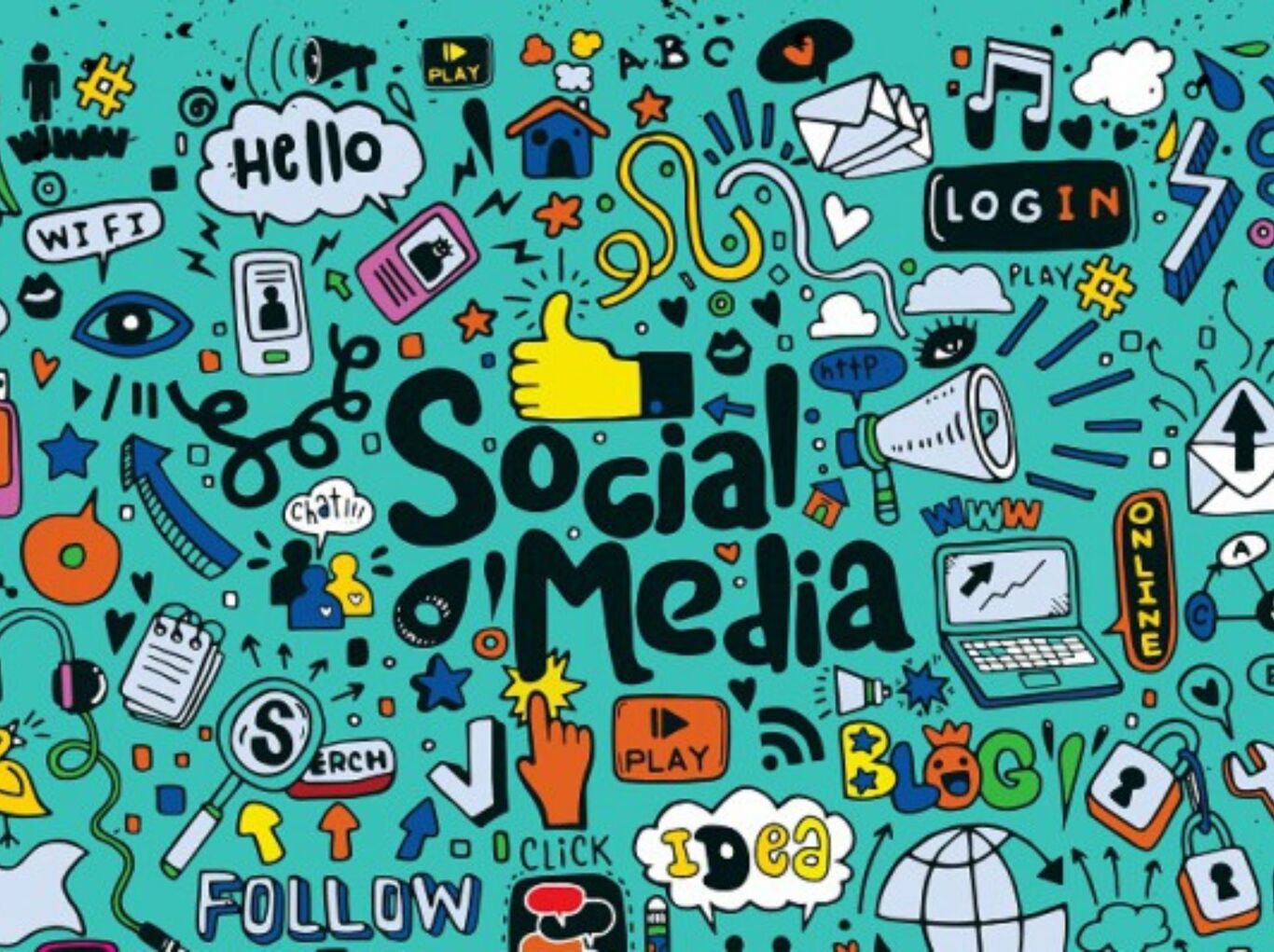Advertising Intelligence: The Complete Resource for Marketing Leaders (2025-2026)

The marketing landscape has fundamentally shifted. For years, competitive advantage came from having data. Today, it comes from making decisions faster than your competitors.
Your dashboards are full of data. Your platforms are integrated. Your team understands metrics. And yet, decisions still take 2-3 days to make. Meanwhile, your competitors are making the same decisions in 15 minutes.
This isn't about having less data. This is about moving from data abundance to decision velocity. This is the advertising intelligence era.
What is advertising intelligence? It's the convergence of three capabilities: unified real-time data from all your marketing platforms, artificial intelligence that understands advertising dynamics, and prescriptive recommendations that tell you exactly what to do next.
It's not just dashboards (those are static and require interpretation). It's not just ChatGPT (that doesn't have your data or understand advertising). It's not just traditional BI tools (those are slow and complex). Advertising intelligence is something new entirely.
This comprehensive resource guide covers everything you need to understand the market, evaluate solutions, and make the right decision for your team. Whether you're researching the category, evaluating platforms, building a business case, or exploring the market-this guide is your starting point.
What You'll Learn in This Guide:
- What advertising intelligence actually is (and what it's not)
- How the market is evolving (2024-2027 timeline)
- Five categories of solutions and how they compare
- The three pillars of our 50+ blog resource library
- How to navigate this landscape based on your role
- Key statistics, trends, and competitive advantages
- Your next steps based on your situation
What Is Advertising Intelligence? (And Why It Matters Now)
Advertising intelligence is a system that ingests real-time data from all your marketing platforms, applies machine learning models and advertising domain expertise to understand your situation, and prescribes specific actions ranked by business impact.
Let's break this down:
Real-time data from all your marketing platforms: Not quarterly reports. Not weekly dashboards. Not data exports from one platform at a time. Advertising intelligence integrates data from Google Ads, Meta, Amazon, The Trade Desk, Shopify, CRMs, CDPs, data warehouses, everywhere your marketing lives and updates it hourly or faster.
Machine learning models + advertising expertise: The system isn't just aggregating data. It's analyzing patterns. It understands how ad platforms work, how customer behavior changes, how metrics interact. It knows that when CAC rises 30%, the cause is usually one of five specific things and it can diagnose which one is happening in your account.
Prescriptive recommendations ranked by business impact: The system doesn't say "CAC is rising, here are some things you could try." It says "CAC is rising because of audience overlap. Move this 15% of spend here, reduce that 20% of audience size, and you'll see 24% CAC improvement within 48 hours."
This is fundamentally different from every other type of marketing tool.
What Advertising Intelligence is NOT
It is not a dashboard (like Tableau, Looker, or Power BI). Dashboards are excellent for exploration and visualization, but they require human interpretation. You look at the dashboard, see that CAC went up, think about why, guess at a solution, try it, monitor results. Advertising intelligence does the thinking for you.
It is not ChatGPT (or any general-purpose AI). ChatGPT is powerful for many things, but it doesn't have access to your real marketing data. It can't integrate with your platforms. It can't make decisions tied to your specific metrics. It generates conversational answers, not ranked prescriptive actions.
It is not traditional business intelligence (data warehouse + SQL + BI tools). Traditional BI is powerful but slow. It requires technical teams. It's not conversational. You can't ask a natural language question and get a ranked recommendation with projected impact.
It is not a marketing automation tool (like HubSpot or Marketo). Those tools manage workflows and campaigns. Advertising intelligence sits above them it tells you what campaigns to prioritize, what to optimize, and what to change.
Why Does This Matter Right Now?
Three market forces have converged to make advertising intelligence essential in 2025:
1. Ad Platform Algorithms Update Hourly
Google and Meta no longer optimize campaigns weekly or daily. Their algorithms learn in real-time. They adjust bids, targeting, and creativity in minutes. If you're still making marketing decisions on a 3-day cycle, you're always behind. By the time you implement a change, the platform has already moved on.
Advertising intelligence closes this gap by making recommendations at the speed platforms operate real-time.
2. Customer Behavior Shifts Daily
Seasonality, competitive activity, external events, pricing changes all affect customer behavior in real-time. The audience targeting strategy that worked yesterday might be saturated today. The creative that had a 5% CTR yesterday has fatigue today.
Traditional reporting (weekly or quarterly) can't keep up. Real-time advertising intelligence can.
3. Decision Velocity is Now the Competitive Edge
Across a single quarter, the advantage compounds:
- Organization A makes decisions on a 2-3 day cycle: ~40 major decisions per quarter
- Organization B makes decisions on a 15-minute cycle: ~120 major decisions per quarter
By the end of quarter, Organization B has tested 3x more variations, learned 3x more, and optimized 3x more. The gap widens each quarter. By year two, it's insurmountable.
This isn't theoretical. Companies using prescriptive advertising intelligence report:
- Decision cycles compressed from days to minutes
- CAC improvements of 25-40%
- ROAS improvements of 15-35%
- Marketing efficiency gains of 30-50%
The Evolution of Advertising Intelligence (2015-2027)
From dashboards to autonomous AI, advertising intelligence has undergone a radical transformation. What began as static data visualization has evolved into real-time, prescriptive, and soon self-executing intelligence. Each phase marks a shift in how marketers interact with data - from observing to predicting to acting automatically. Here’s how the journey unfolded:
Phase 1 (2015-2019): The Dashboard Era
The dominant solution was the business intelligence tool: Tableau, Looker, Power BI, etc. These tools excelled at visualization and flexible analysis. You could build custom dashboards, explore data, and share insights.
But the bottleneck was human interpretation. A human had to:
- Look at the dashboard
- Understand what changed
- Think about why
- Generate hypotheses
- Decide on action
- Implement
- Monitor results
- Iterate
This cycle took 2-3 days minimum.
Phase 2 (2019-2023): Predictive Analytics + Data Integration
Then came data warehouses (Snowflake, BigQuery), CDPs (Segment, mParticle), and predictive analytics tools. Organizations could now centralize their data and make some predictions ("This customer will likely churn" or "This cohort will have 30% CAC").
This was progress, but still not decision-making. Predictions tell you what might happen. They don't tell you what to do about it. The human interpretation loop was still required.
Phase 3 (2023-2025): Prescriptive Intelligence Emerges
Starting in 2023-2024, a new category emerged: prescriptive AI platforms built specifically for marketing. These platforms combined:
- Real-time data integration (200+ platforms)
- Machine learning models trained on advertising dynamics
- Natural language interfaces
- Prescriptive recommendations (not just predictions)
- Outcome projections (not just insights)
This is where Intellsys AdGPT operates.
For the first time, marketing teams could ask a question in English and get back a specific action with a projected impact. "My CAC is rising—what should I do?" → "Move 30% of the budget from Google to Meta (projected +25% ROAS improvement, 48-hour timeline)."
This compressed decision cycles from 2-3 days to 15 minutes.
Phase 4 (2025-2027): Autonomous AI Agents
The next phase is already beginning. Autonomous AI agents will take prescriptive recommendations further—they'll not just recommend actions but execute them (with human review gates). They'll manage entire campaign loops: planning, optimization, reallocation, testing, monitoring.
By 2026-2027, autonomous advertising systems will be table stakes.
Five Categories of Advertising Intelligence Solutions
Not all tools are created equal. Understanding the five categories helps you choose the right one for your needs.
Category 1: Dashboard BI Tools
Examples: Tableau, Looker, Power BI, Google Data Studio
What They Do Well:
- Flexible visualization and exploration
- Custom dashboards tailored to your business
- Powerful for analytics teams and data scientists
- Excellent for understanding historical trends
- Great for ad-hoc analysis and discovery
Limitations:
- Require human interpretation (dashboards don't recommend actions)
- Slow to implement (complex configurations)
- Require technical expertise (SQL, data modeling)
- Don't integrate directly with ad platforms (rely on exports or connectors)
- Decision cycle is still 2-3 days
Best For: Analytics teams that need custom analysis, organizations building data warehouses, companies with data science expertise
Category 2: Marketing Data Integration Platforms
Examples: Supermetrics, Improvado, Adverity
What They Do Well:
- Centralize data from multiple ad platforms
- Normalize metrics across platforms
- Reduce manual data export/import work
- Provide pre-built dashboards for common use cases
Limitations:
- Still dashboard-based (require interpretation)
- Don't provide prescriptive recommendations
- No natural language interface
- Limited to data aggregation (not decision-making)
- Decision cycle is still 1-2 days
Best For: Teams that need unified reporting across platforms, organizations overwhelmed by data silos, marketing ops teams managing multi-channel data
Category 3: Customer Data Platforms (CDPs)
Examples: Segment, mParticle, Tealium, Lytics
What They Do Well:
- Centralize first-party customer data
- Create unified customer profiles
- Enable audience activation across channels
- Provide identity resolution
Limitations:
- Not designed for advertising intelligence
- Focus on data collection, not decision-making
- No prescriptive recommendations
- Can be expensive at scale
- Better for CRM and marketing automation than advertising optimization
Best For: Organizations building customer data infrastructure, companies focused on first-party data strategy, teams integrating CRM with marketing
Category 4: Generative AI Tools
Examples: ChatGPT, Perplexity, Google Gemini
What They Do Well:
- Conversational interface (ask questions in English)
- General knowledge and research
- Content generation and ideation
- Accessible to non-technical users
Limitations:
- No access to your real marketing data
- Cannot integrate with your platforms
- Cannot make decisions tied to your metrics
- Prone to hallucinations (confident wrong answers)
- Generic advice not specific to your situation
- No real-time updates
Best For: Content brainstorming, general marketing research, learning about concepts, non-technical team members exploring ideas
Category 5: Prescriptive AI Platforms (Advertising Intelligence)
Examples: Intellsys AdGPT
What They Do Well:
- Real-time data from 200+ marketing platforms
- Prescriptive recommendations (what to do, not just what happened)
- Ranked by business impact (CAC, ROAS, LTV outcomes)
- Natural language conversational interface
- Outcome projections (expect 25% improvement in 48 hours)
- Domain-specific (understands advertising dynamics)
- Automated execution and monitoring (with governance)
Advantages Over All Other Categories:
- Fastest decision cycles (15 minutes vs. 2-3 days)
- Specific to your situation (uses your data)
- Prescriptive not just descriptive (tells you what to do)
- Outcome-focused (tied to business metrics)
- Continuously learning (improves with each decision)
Best For: Performance marketing teams, organizations prioritizing decision velocity, companies with multi-channel marketing, teams under pressure to improve efficiency
The Three Pillars of Our Resource Library
We've built a comprehensive resource library around three pillars. Understanding each helps you navigate based on your needs.
Pillar 1: Knowledge (15 blogs)
Purpose: Understand the market, trends, and category
What's Covered:
- Market sizing and opportunity ($147B advertising intelligence market, growing 20% YoY)
- Evolution of advertising intelligence (2015-2027 timeline)
- Five categories of solutions (detailed comparison)
- Competitive landscape (7 leading platforms reviewed)
- Analytics types explained (prescriptive vs. predictive vs. descriptive)
- Key metrics every marketer needs (CAC, ROAS, LTV, MER, CPL, ARPU)
- Attribution modeling explained (how it enables prescriptive intelligence)
- Organizational impact (how teams are restructuring around AI)
- Industry-specific perspectives (e-commerce vs. SaaS vs. B2B)
- Future predictions (autonomous systems 2026-2028)
- Competitive advantages of prescriptive intelligence
Who Should Read:
- CMOs researching the category
- CFOs building business cases
- Marketing leaders evaluating new approaches
- Analytics teams understanding market trends
- Investors analyzing the space
Pillar 2: Product (15 blogs)
Purpose: Understand Intellsys AdGPT and how prescriptive intelligence actually works
What's Covered:
- How AdGPT's prescriptive engine works (the core technology)
- 200+ integrations and real-time data (what platforms connect)
- Conversational AI interface (ask questions in English)
- Specific use cases with workflows:
- Reduce CAC by 25-40% without pausing campaigns
- Smart budget allocation across 8+ channels
- ROAS recovery (fix drops in 48 hours)
- Audience optimization and lookalike scaling
- Creative performance analysis and testing
- Real case studies (customers using AdGPT)
- Competitive comparisons:
- Why ChatGPT isn't enough for marketing decisions
- Tableau vs. Power BI vs. AdGPT (when to use each)
- AdGPT vs. Supermetrics vs. Improvado
- Security and data privacy
- API and custom integrations (for technical teams)
Who Should Read:
- Performance marketers evaluating solutions
- Marketing operations teams building tech stacks
- Finance teams calculating ROI
- Technical teams integrating platforms
- Marketing leaders wanting hands-on understanding
Pillar 3: Brand (14 blogs)
Purpose: Understand GrowthJockey's story, team, vision, and culture
What's Covered:
- Why we built AdGPT (the problem we identified)
- GrowthJockey's evolution (venture builder to product company)
- Our decade-long thesis (why prescriptive intelligence matters)
- Meet the team (founders, engineers, product leaders)
- Company culture and values
- Thought leadership:
- Prescriptive intelligence as competitive advantage
- 2025-2026 advertising intelligence predictions
- India market perspective
- Customer success stories and case studies
- Careers and hiring (join the team)
- Partnerships and ecosystem
Who Should Read:
- Potential customers wanting to know the company
- Job seekers interested in GrowthJockey
- Partners evaluating partnership opportunities
- Press and media
- Investors analyzing the company
How to Use This Resource (Based on Your Role)
- Read the sections above (you already have!)
- Read: What Is Advertising Intelligence? Definition + Why Marketers Need It Now
- Read: The $147 Billion Advertising Intelligence Market: Growth, Consolidation & Why Startups Are Winning in 2025
- Read: From 'What Happened' to 'What to Do Now': How AdGPT's Prescriptive Engine Works
- Next Step: Schedule a strategy call - to discuss your situation
If You're Evaluating Solutions
- Read: Why ChatGPT Isn't Enough for Marketing Decisions
- Next Step: Start your free 14-day trial to see AdGPT in action with your data
If You're Building a Business Case for Your CFO/Finance Team
- Read: Why Prescriptive Intelligence Is Becoming the Competitive Advantage for Marketing Leaders
- Read: Reduce CAC by 25-40% Without Pausing Campaigns: The AdGPT Workflow That Works
If You're Considering Joining GrowthJockey
- Read: Why GrowthJockey Built Intellsys AdGPT: The Problem With Every Advertising Intelligence Platform
- Read: From Venture Builder to Advertising Intelligence Pioneer: The GrowthJockey Evolution Story
- Read: Meet the Team Behind Intellsys AdGPT
- Browse: Open positions at GrowthJockey
Key Statistics and Trends (2025-2027)
Size & Growth:
- Global advertising intelligence market: $147 billion (2025)
- Annual growth rate: 20% YoY
- Projected size by 2030: $350+ billion
Adoption:
- 54% of enterprises now exploring prescriptive analytics
- 19% in deployment or pilot phase
- 11% in production with significant results
- Early adopters report 30-50% marketing efficiency improvements
Timeline:
- 2025: Prescriptive intelligence adoption accelerates
- 2026: Autonomous AI agents move from concept to production
- 2027: Prescriptive intelligence becomes table stakes
- 2027+: Autonomous marketing systems standard
Urgency Signals
Why This Matters Now:
- 95% of generic AI pilots fail in enterprises (MIT research, 2025)
- Purpose-built AI solutions succeed 67% of time
- Top quartile marketing teams make decisions 3x faster than bottom quartile
- Decision velocity is now the primary competitive advantage
- Organizations without prescriptive intelligence will face 25-40% efficiency penalty by 2027
Competitive Advantage Metrics
Organizations using prescriptive advertising intelligence report:
Decision Speed:
- Decision cycles: 2-3 days → 15 minutes
- Impact: 3x more decisions, 3x more learning per quarter
Marketing Efficiency:
- CAC reduction: Average 25-40%
- ROAS improvement: Average 15-35%
- Overall marketing ROI: 30-50% improvement
Organizational Outcomes:
- Revenue growth acceleration (10-25%)
- Marketing team productivity increase (30-40%)
- Budget allocation optimization
- Reduced marketing team turnover (better tool experience)
The Choice Ahead
By now, you understand the landscape. You know what advertising intelligence is, why it matters, the categories of solutions, and how they compare.
The question now is: Will your organization lead or follow?
Organizations adopting prescriptive advertising intelligence now (Q4 2025 and Q1 2026) will build 12+ months of learning and optimization advantage. They'll have tested more variations, discovered more opportunities, and built organizational muscle memory around prescriptive decision-making.
Organizations waiting until 2026 or 2027 will be playing catch-up.
Your Next Step
Based on where you are:
- Experience AdGPT with your real advertising data
- Get prescriptive recommendations for your top 3 growth levers
- See real workflows (CAC optimization, budget allocation, ROAS recovery)
- No credit card required
Schedule a 20-Minute Strategy Call
- Talk with our team about your specific situation
- Understand how prescriptive intelligence applies to your business
- Get personalized recommendations
Conclusion: Welcome to the Era of Prescriptive Advertising Intelligence
The marketing landscape is shifting. Data abundance has moved from competitive advantage to table stakes. Speed-decision-velocity is now the edge that matters.
You've read this far because you understand something is changing. Maybe your team is making decisions too slowly. Maybe your dashboards have too much data but not enough guidance. Maybe you're watching competitors move faster and wondering how.
The answer is prescriptive advertising intelligence.
This resource library (50+ blogs, guides, case studies, frameworks) is designed to help you navigate this landscape, understand your options, and make the right decision for your organization.
Start with whichever pillar resonates with you - Knowledge, Product, or Brand. Everything connects. Everything links together.
We're here to help you build better marketing decisions.
Welcome to the era of prescriptive advertising intelligence.
— The GrowthJockey and Intellsys AdGPT Team








